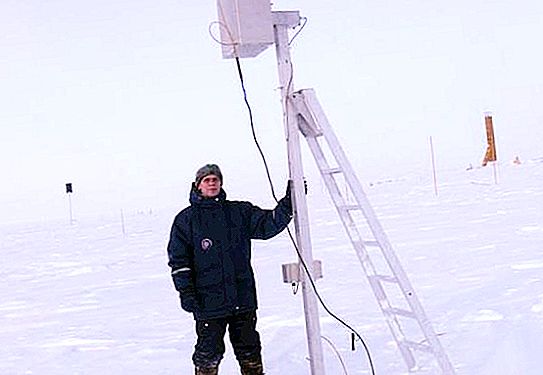The legendary Russian polar station Vostok in Antarctica was created in 1957. It is located in the center of the continent, among the ice and snow. Like 59 years ago, today it is a symbol of the pole of inaccessibility.
The distance from the station to the South Pole is less than to the sea coast, and the population of the station does not exceed 25 people. Low temperatures, an altitude of more than three kilometers above sea level, a complete isolation from the world in wintertime turn it into one of the most uncomfortable places for people to stay on Earth. Despite the most difficult conditions, life in the "East" does not stop even at -80 ° C. Scientists are researching a unique subglacial lake, which is located at a depth of more than four kilometers.
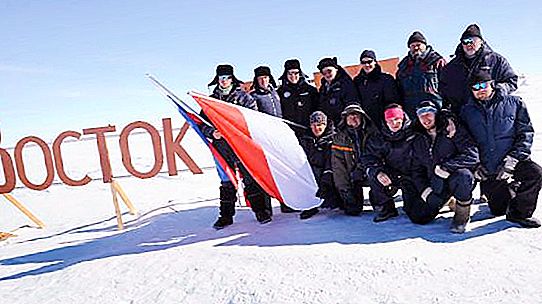
Location
Vostok Scientific Station (Antarctica) is located 1253 km from the South Pole and 1260 km from the sea coast. The ice cover here reaches a thickness of 3700 m. In winter, it is impossible to get to the station, so polar explorers have to rely only on their own forces. In summer, cargo is delivered here by air. For the same purpose, a sled-caterpillar train from the Progress station is also used. Previously, such trains came from Mirny station, but today, due to the increase in hummocks along the train, this has become impossible.
Polar station "East" is located next to the South geomagnetic pole of our planet. This allows you to study the changes in the Earth's magnetic field. In the summer, at the station there are about forty people - engineers and scientists.
Station "East": history, climate
This unique science center was built in 1957, for research and observation of the Antarctic ecosystem. Since its founding, the Russian Vostok station in Antarctica has never stopped working, its activities continue today. Scientists are very interested in a relict ice lake. In the mid-nineties, a unique drilling of glacial deposits was carried out at the station. First, thermal drill shells were used, and then electromechanical shells on a load-carrying cable.
The drilling teams of the AARI and the Leningrad Mining Institute jointly discovered the unique underground lake "Vostok". It is hidden by an ice sheet more than four thousand meters thick. Its size is supposedly 250x50 kilometers. Depth over 1200 meters. Its area exceeds 15.5 thousand square kilometers.
New projects are currently being developed to explore this deep lake. Vostok is a station in Antarctica that took part in the target federal program “The World Ocean”. In addition, scientists are investigating human life in such extreme conditions.
Climate
Harsh conditions famous station polar "East". The climate of this place can be characterized briefly - there is no colder place on Earth. An absolute minimum temperature of 89 ° C is recorded here. The average temperatures throughout the year range from -31 ° C and - 68 ° C, to the absolute maximum, which was recorded back in 1957 - -13 ° C. 120 days polar night continues - from the end of April to the end of August.
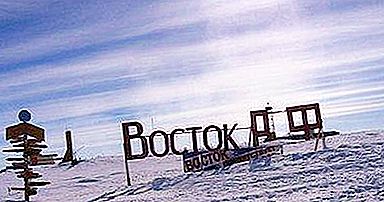
The warmest months at the station are December and January. At this time, the air temperature is -35.1 ° C -35.5 ° C. This temperature is comparable to the cold Siberian winter. The coldest month is August. The air temperature drops to -75.3 ° C, and sometimes even below -88.3 ° C. The coldest maximum (daily) is -52 ° C, for the entire time of observation in May, the temperature does not rise above -41.6 ° C. But low temperatures are not the main climatic problem and complexity for polar explorers.
Station "Vostok" (Antarctica) is located in an area with almost zero air humidity. There is a lack of oxygen. The station is located at an altitude of more than three thousand meters above sea level. In such difficult conditions, human acclimatization lasts from a week to two months. This process is usually accompanied by flickering in the eyes, dizziness, nosebleeds, ear pain, feeling of suffocation, increased blood pressure, sleep disturbance, loss of appetite, nausea, severe pain in the muscles and joints, weight loss of up to five kilograms.
Scientific activity
Vostok is a station in Antarctica, whose specialists have been researching mineral and hydrocarbon raw materials and drinking water reserves for more than half a century, conducting actinometric, aerometeorological, glaciological and geophysical observations. In addition, they conduct medical research, study climate change, conduct research on the "ozone hole", etc.
Life at the station
Vostok is a station in Antarctica where special people live and work. They are infinitely devoted to their work, they are interested in the research of this mysterious continent. This obsession, in the best sense of the word, allows them to endure all the hardships of life, a long separation from loved ones. Only the most desperate extremes can envy the lives of polar explorers.
Station "Vostok" (Antarctica) has many features. For example, in ordinary life we are surrounded by some kind of insects - butterflies, mosquitoes, midges. There is nothing at the station. There are not even microorganisms. The water here is from melted snow. It does not contain any minerals or salts, so at first the station workers are constantly thirsty.
We have already mentioned that researchers have long been drilling a well to the mysterious Lake Vostok. In 2011, at a depth of 3, 540 meters, new ice was discovered, which froze from below. This is the frozen water of the lake. Polar explorers say that it is clean and very pleasant to taste, it can be boiled and brewed tea.
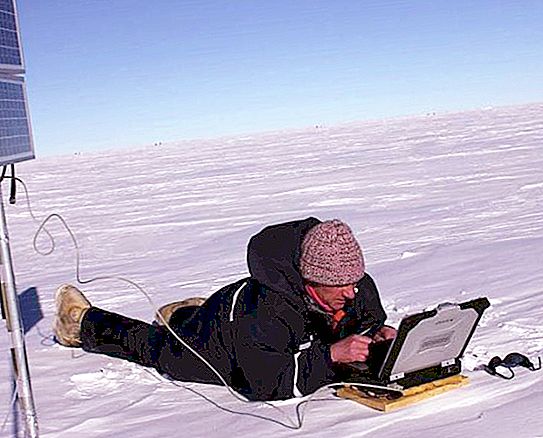
The building where the polar explorers live is swept by a two-meter layer of snow. There is no daylight inside. Two exits lead out - the main and the spare. The main exit is the door behind which a fifty-meter tunnel is dug in the snow. The emergency exit is much shorter. It is a steep staircase leading to the roof of the station.
There is a wardroom in a residential building, a TV hangs on the wall (although there is no broadcast television at the station), a billiard table is installed. When in this room the temperature drops to minus, everyone tries not to go there. But one day, polar explorers in a warehouse discovered a faulty game console. It was repaired, connected to a TV, and the wardroom came to life - now polar explorers are gathering here. In warm jackets and trousers, in felt boots and hats, they come to play fist fights and races.
Polar explorers note that in recent years, the Vostok station (Antarctica) has been transformed in a domestic way. A warm residential module, rooms for scientific work, a dining room, a diesel unit and other buildings necessary for the life of the station made life here quite acceptable.
Fire at Vostok Station in Antarctica
On the twelfth of April 1982, Vostok did not get in touch with the mainland. No one could have guessed what happened. According to the schedule, the station got in touch nine times a day. When there was no connection at the second appointed hour, it became clear: something extraordinary had happened. Lack of communication - in any case, an emergency. The size of the disaster at the station then no one could have foreseen.
The Vostok station (Antarctica) had a separate room where the diesel-electric station was located. There a fire broke out on the night of March 12. This was the very beginning of wintering. A small house in which mechanics lived was attached to the power plant. They were awakened at four in the morning by the pungent smell of smoke.

Going outside, they found that a fire was blazing on the roof. After a couple of minutes, all the wintering people, hastily dressed, ran out into the frost. The spotlight that illuminated the area went out. The light was only from the fire.
Fire fighting
They began to shower the fire with snow, then they tried to cover it with tarpaulin to prevent the access of oxygen. But the tarp ignited instantly. People who climbed onto the roof soon had to jump down. The roof burned down completely in thirty minutes.
Fifteen meters from the station were tanks with diesel fuel. It was impossible to drag them away - they are too heavy. Fortunately, the wind blew in the opposite direction. It also saved that the diesel fuel was too cold, in the cold it became viscous. She had to get very hot to flare up.
Immediately, the polar explorers did not notice that there was not one mechanic among them. His remains were found in the ashes. Immediately after the fire, the station premises were left without heat and light, and it was –67 ° C outside …
How to survive?
A real misfortune happened. Two diesel generators, which supplied the station with electricity, and two standby ones were completely out of order. There was no light in the rooms, scientific instruments were de-energized, the batteries and the stove in the galley cooled down. The problem was even with water - it was received in an electric snow melter. In the utility room they found an old kerosene stove. She was transferred to one of the residential huts.
Meanwhile, Moscow was frantically looking for a way out of this situation. Consulted with pilots and sailors. But none of the options could be realized on a harsh polar night.
Life after the fire
Polar explorers decided to survive on their own. Brave guys did not wait for help from the mainland. A radio message was transmitted to Moscow: "We will survive until spring." They perfectly understood that the icy continent does not forgive mistakes, but it is ruthless to those who fall into despair.
Wintering continued in force majeure. Polar explorers moved into one tiny dwelling. Five new stoves were made on the basis of gas cylinders. In this room, which was a bedroom, a dining room, and a kitchen, there were also scientific instruments.
The main drawback of the new furnaces was soot. She was collected in a bucket per day. After some time, thanks to the ingenuity of an aerologist and a cook, the winterers were able to bake bread. They glued portions of the dough to the walls of the oven and thus got completely edible bread.

In addition to hot food and heat, light was needed. And then these strong people began to make candles using the available paraffin and asbestos cord. "Candle Factory" worked until the end of wintering.
Work continues!
Despite the incredible conditions, polar explorers began to think more and more about the continuation of scientific activity. But this was due to a huge shortage of electricity. The only surviving engine met only the needs of radio communications and electric welding. They simply "were afraid to breathe."
Nevertheless, the meteorologist interrupted his observations of the weather only during a fire. After the tragedy, he worked as usual. Looking at him, the magnetologist resumed work.
The rescue
So the wintering took place - in severe frosts, without sunlight, with a lack of oxygen, with huge domestic inconveniences. But these people made it out, which in itself is a feat. They have not lost their composure and “taste” for work. They lasted 7.5 months, as promised by the Moscow curators, in extreme circumstances.
In early November, an IL-14 aircraft flew into the station, which delivered a new generator and four new wintering men from the next, 28th expedition. There was a doctor among the passengers of the long-awaited aircraft. According to him, he expected to see demoralized and exhausted people at the station. However, these guys were fine.
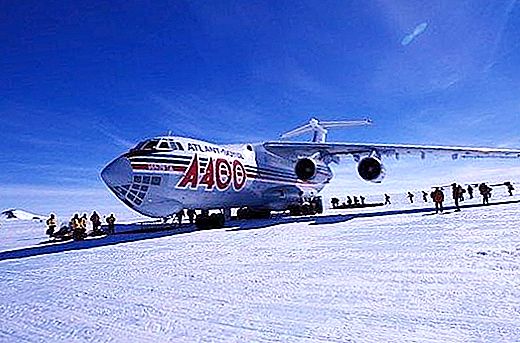
Fifteen days later, a sledge-tractor train arrived from Mirny. He delivered building materials and products, as well as everything for the construction of an energy station. After that, time at the station went faster: everyone tried to catch up with the accumulated "debts" for scientific research.
When the shift arrived, the courageous polar explorers were sent by plane to Mirny. The same board delivered the remains of the deceased Alexei Karpenko. He was buried in the Antarctic Novodevichy cemetery. The remaining polar explorers moved to the ship "Bashkiria", which delivered them to Leningrad. Today, they are all alive and well, and some have managed to once again participate in the Antarctic expedition during this time.

